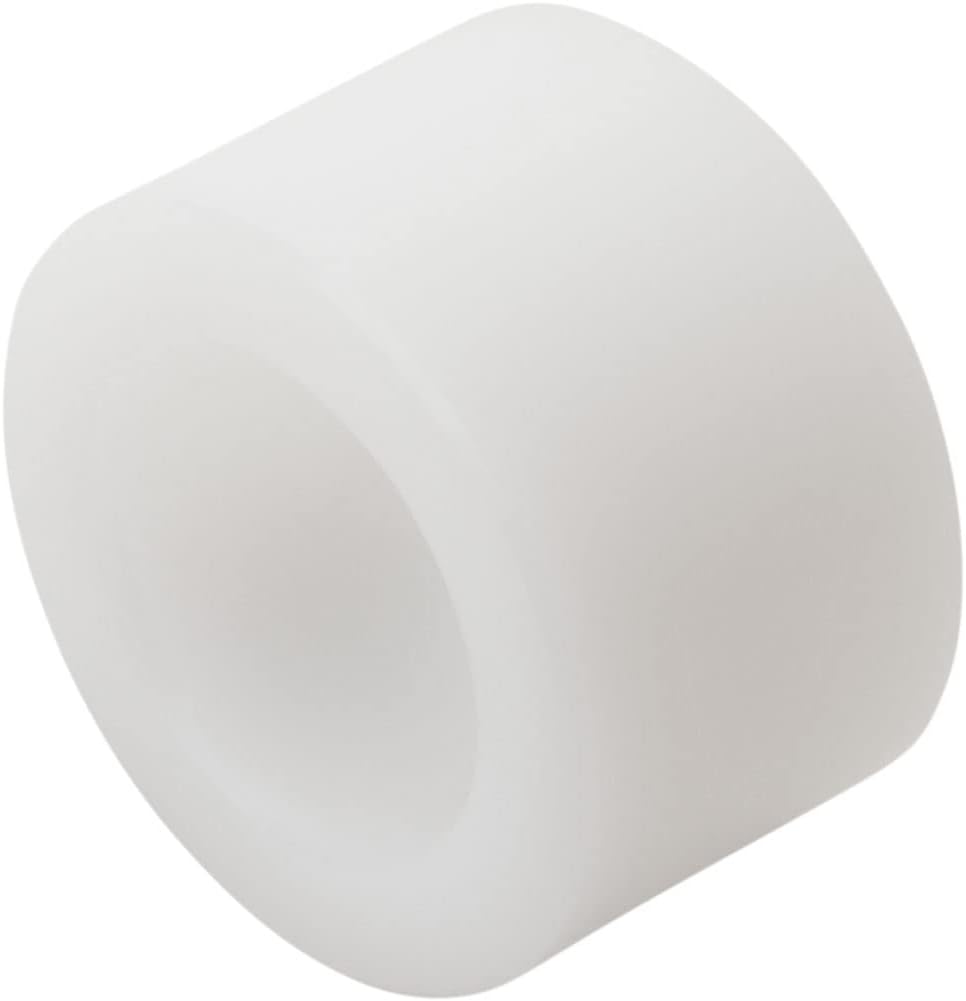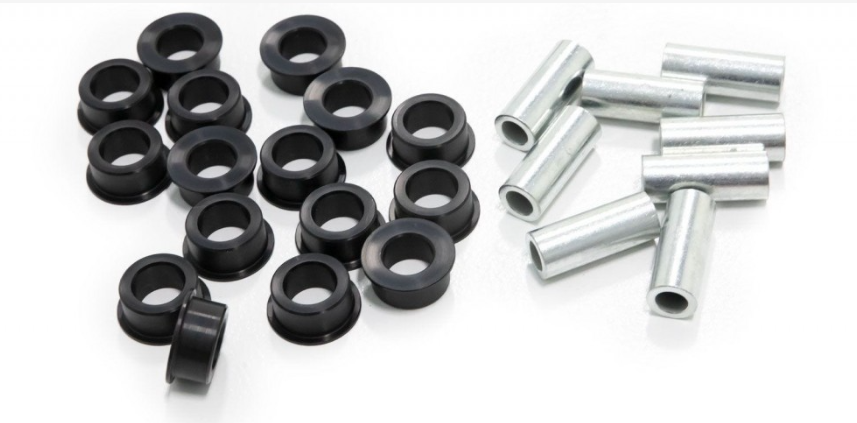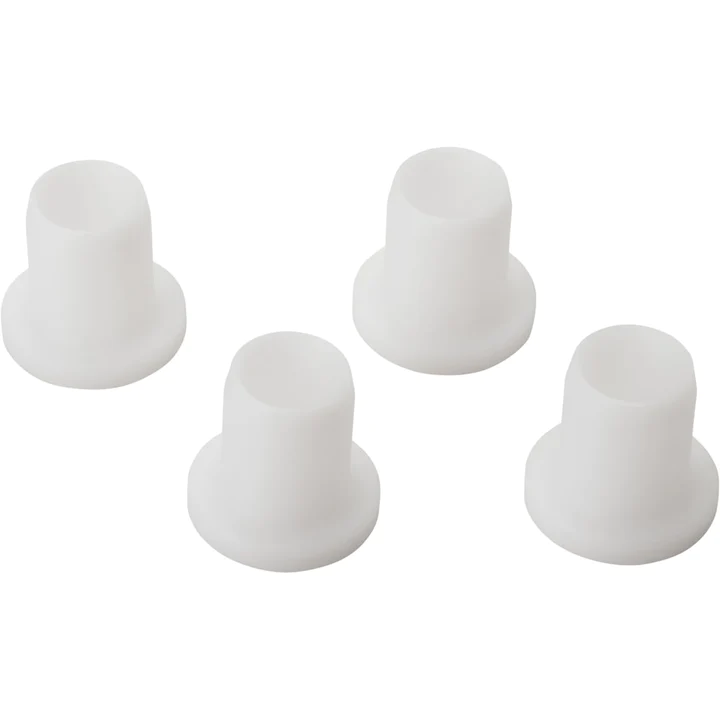
Can I retrofit my existing equipment with UHMW bushings for improved performance?
Yes, retrofitting your existing equipment with UHMW (Ultra-High Molecular Weight Polyethylene) bushings can be a beneficial solution for improving performance. Here’s a detailed explanation:
Retrofitting involves replacing the existing bushings in your equipment with UHMW bushings, which offer several advantages:
1. Friction Reduction:
UHMW bushings have excellent self-lubricating properties and a low coefficient of friction. By replacing traditional bushings with UHMW bushings, you can significantly reduce friction between moving parts. This results in smoother operation, improved energy efficiency, and reduced wear on components.
2. Wear Resistance:
UHMW bushings exhibit exceptional wear resistance, even in demanding applications. By retrofitting your equipment with UHMW bushings, you can enhance the durability and longevity of machinery components. The wear resistance of UHMW bushings helps minimize the need for frequent maintenance and replacement, reducing downtime and overall operating costs.
3. Noise Reduction:
UHMW bushings have inherent noise-dampening properties. Retrofitting your equipment with UHMW bushings can help reduce noise levels generated during operation. The self-lubricating properties of UHMW bushings minimize friction-induced vibrations and noise, resulting in a quieter working environment and improved operator comfort.
4. Corrosion Resistance:
UHMW bushings are highly resistant to corrosion and chemical attack. By retrofitting your equipment with UHMW bushings, you can improve the corrosion resistance of the machinery components. This is particularly beneficial in applications where the equipment is exposed to harsh environments or corrosive substances.
5. Customization:
UHMW bushings can be customized to fit specific equipment requirements. They can be machined or molded to match the dimensions and specifications of the existing bushings, allowing for a seamless retrofitting process. This ensures proper fit and compatibility with the machinery components.
6. Cost-Effective Solution:
Retrofitting your existing equipment with UHMW bushings can be a cost-effective solution compared to purchasing new machinery. It allows you to upgrade the performance and functionality of your equipment without the need for a complete replacement. This can result in significant cost savings while still achieving improved performance.
Before retrofitting your equipment with UHMW bushings, it’s important to consider factors such as the design of the equipment, load requirements, operating conditions, and compatibility with other components. Proper installation and alignment of the UHMW bushings are crucial to ensure optimal performance and longevity.
In summary, retrofitting your existing equipment with UHMW bushings offers numerous benefits, including friction reduction, wear resistance, noise reduction, corrosion resistance, customization, and cost-effectiveness. By upgrading your equipment with UHMW bushings, you can enhance performance, extend component life, reduce maintenance needs, and achieve improved overall efficiency.

How do I choose the right size and configuration of UHMW bushings for my application?
Choosing the right size and configuration of UHMW (Ultra-High Molecular Weight Polyethylene) bushings for your application involves considering several factors. Here’s a detailed explanation:
1. Load Requirements:
Determine the load requirements of your application, including the magnitude and distribution of the load. This information is crucial in selecting UHMW bushings that can handle the specific load demands effectively.
2. Shaft Diameter and Tolerance:
Measure the diameter of the shaft or pivot where the UHMW bushing will be installed. Ensure that you have accurate measurements and consider the tolerance requirements to ensure a proper fit between the bushing and the shaft.
3. Bushing Length:
Determine the required length of the UHMW bushing based on the specific application and installation requirements. Consider factors such as the available space, axial movement requirements, and any additional components or features that need to be accommodated.
4. Clearance and Interference:
Consider the desired clearance or interference fit between the UHMW bushing and the housing or surrounding components. The fit type should be selected based on the specific application requirements, taking into account factors such as the desired level of clearance, the need for self-alignment, and the prevention of excessive play or binding.
5. Lubrication Requirements:
Determine the lubrication requirements of your application. UHMW bushings have inherent self-lubricating properties, but in certain cases, additional lubrication may be necessary. Consider the compatibility of the lubricant with UHMW and the operational conditions to ensure optimal performance and longevity.
6. Environmental Factors:
Take into account the environmental conditions in which the UHMW bushings will operate. Consider factors such as temperature extremes, exposure to chemicals or corrosive substances, moisture levels, UV radiation, and other environmental factors that could impact the performance and durability of the bushings.
7. Application Specifics:
Consider any specific requirements or constraints of your application. This could include factors such as speed, precision, noise reduction, vibration dampening, or any other unique considerations that may influence the selection of UHMW bushings.
8. Manufacturer or Supplier Guidance:
Consult with the manufacturer or supplier of UHMW bushings for guidance. They can provide valuable expertise and assistance in selecting the appropriate size and configuration of UHMW bushings based on your specific application requirements. They may also offer technical resources, engineering support, or customized solutions to meet your needs.
In summary, choosing the right size and configuration of UHMW bushings involves considering factors such as load requirements, shaft diameter and tolerance, bushing length, clearance and interference, lubrication requirements, environmental factors, application specifics, and seeking guidance from the manufacturer or supplier. By carefully evaluating these factors and consulting with experts, you can ensure the optimal selection and performance of UHMW bushings for your application.

How do UHMW bushings compare to other types of bearing materials?
When comparing UHMW (Ultra-High Molecular Weight Polyethylene) bushings to other types of bearing materials, several factors come into play. Here’s a detailed comparison:
1. Friction and Wear:
UHMW bushings have a low coefficient of friction, resulting in reduced friction and wear. Compared to materials like metal or bronze, UHMW bushings offer superior self-lubricating properties, which reduce the need for additional lubrication. This self-lubricating feature minimizes friction, wear, and the associated maintenance requirements.
2. Load Capacity:
UHMW bushings have excellent load-bearing capabilities, particularly under high-load conditions. They can distribute the load evenly, reducing stress concentrations and minimizing the risk of premature wear or failure. However, certain metals like bronze or steel may have higher load capacities in specific applications.
3. Wear Resistance:
UHMW bushings exhibit excellent wear resistance, making them suitable for applications involving repetitive sliding or rubbing motions. They can withstand continuous use without experiencing significant wear. Materials such as bronze or steel may also offer good wear resistance, but UHMW bushings often outperform them in applications requiring low friction and self-lubrication.
4. Chemical Resistance:
UHMW bushings have high resistance to a wide range of chemicals, acids, solvents, and corrosive substances. This chemical resistance protects the bushings from degradation, making them ideal for applications in harsh environments. In comparison, metals like steel or bronze may be susceptible to corrosion or chemical attack.
5. Impact Strength:
UHMW bushings have excellent impact strength, allowing them to withstand high loads and absorb shocks effectively. They can handle heavy-duty applications and resist deformation or failure even under significant impact forces. Other materials like bronze or steel may have varying levels of impact strength depending on their composition.
6. Temperature Resistance:
UHMW bushings have good temperature resistance, maintaining their properties over a wide temperature range. They can withstand both low and high temperatures without significant dimensional changes or loss of performance. In contrast, certain metals may have higher temperature tolerances but may exhibit thermal expansion or contraction.
7. Machinability:
UHMW bushings are relatively easy to machine, allowing for the creation of bushings with precise dimensions and tolerances. However, metals like bronze or steel can offer greater machining versatility and precision due to their inherent properties.
8. Cost:
UHMW bushings are generally cost-effective compared to many other bearing materials. They offer a long service life, reduced maintenance requirements, and resistance to wear and tear, contributing to overall cost savings. Metals like bronze or steel may have higher upfront costs but can be more economical in certain high-load or extreme temperature applications.
It’s important to note that the suitability of a bearing material depends on the specific application requirements. Factors such as load magnitude, speed, temperature, environment, and lubrication conditions should be considered when selecting the most appropriate bearing material.
In summary, UHMW bushings offer advantages in terms of low friction, self-lubrication, wear resistance, chemical resistance, impact strength, and cost-effectiveness. However, other materials like metals (e.g., bronze or steel) may excel in certain areas such as load capacity, temperature tolerance, or precision machining. Ultimately, the choice of bearing material should be based on a thorough evaluation of the application’s needs and the specific properties offered by each material.


editor by CX 2024-04-25